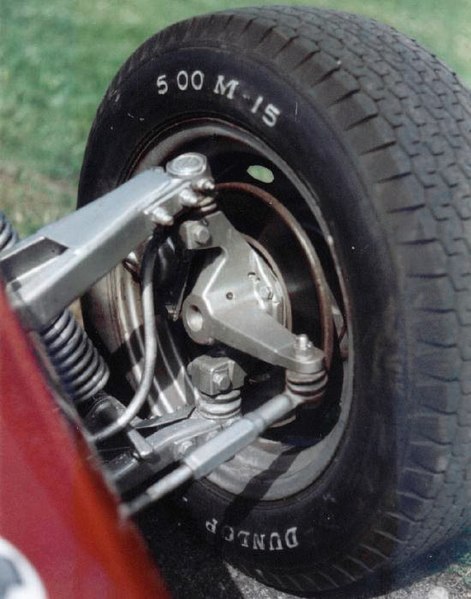Camber angle is one of the angles made by the wheels of a vehicle; specifically, it is the angle between the vertical axis of a wheel and the vertical axis of the vehicle when viewed from the front or rear. It is used in the creation of steering and suspension. If the top of the wheel is farther out than the bottom, it is called positive camber; if the bottom of the wheel is farther out than the top, it is called negative camber.
The 1960 Milliken MX1 Camber Car has a large negative camber
Negative front wheel camber is used in drift cars to improve their handling
Tatra Trucks have quite acute positive camber due to their chassis design, which incorporates a central-tube and swing axles, as seen on this Tatra 815 crane truck.
Negative camber
Steering is the control of the direction of motion or the components that enable its control. Steering is achieved through various arrangements, among them ailerons for airplanes, rudders for boats, tilting rotors for helicopters, and many more.
A cyclist steering a bicycle by turning the handlebar and leaning
Part of a car steering mechanism: tie rod, steering arm, king pin axis (using ball joints)
Rack and pinion unit mounted in the cockpit of an Ariel Atom sports car chassis, atypical of contemporary production automobiles
Non-assisted steering box of a motor vehicle








